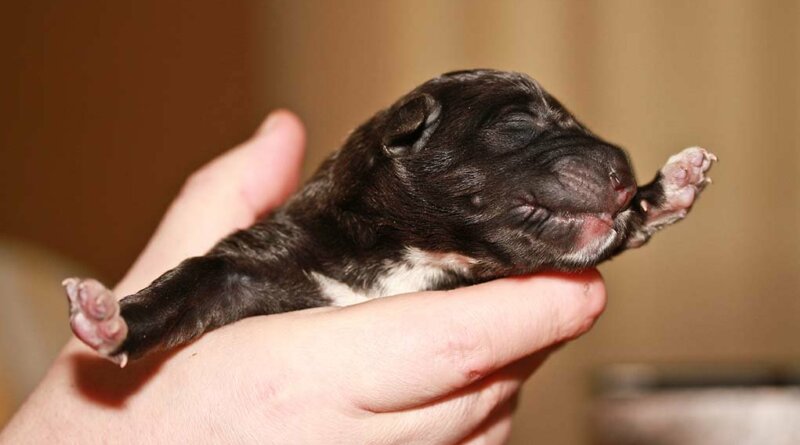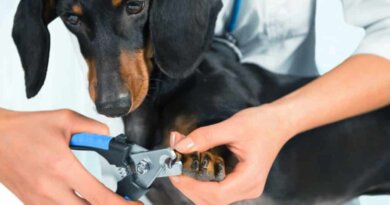20 Dog Pregnancy Tips for a Successful Birth – Top Dog Tips
The arrival of puppies can be a fun and exciting time but there many things that you should know about and prepare beforehand. Below are most common dog pregnancy tips veterinarians and breeders give to help with the puppy birthing process so that you’ll know what to expect, what you need, and how to best prepare.
1. The Pregnancy Cycle
Pregnancy in dogs lasts for about 63 days. If you believe that your dog might be pregnant, get her to the vet as soon as you start to see some of the signs of pregnancy.
Your dog should start to show signs of pregnancy within 3-4 weeks. A vet can do an ultrasound to confirm pregnancy and see how many puppies are coming. There are no dog pregnancy tests, and a vet check is the best way to confirm pregnancy in dogs.
2. How Many Pups to Expect
The size of the litter depends mostly on the breed and size of the dog. Some large breed dogs can have as many 12 puppies in one litter. Small dogs, on the other hand, may just have one or two puppies in a litter. The average litter size for most medium to large size dogs is five or six puppies.
3. Prenatal Care Is Important
Once a vet has confirmed the pregnancy, it’s important that you start prenatal care for the dog. The veterinarian may recommend supplements or tell you that you should feed a special dog food brand. Your dog should get a few checkups during the pregnancy to make sure things are progressing the way that they should.
4. Moms May Be Moody
Hormonal shifts in the mother dog are something you should expect. She may be much more affectionate than usual, or she may be standoffish and cranky. She might also be both, depending on the day. Give your dog some space and let her rest. Her body is preparing for big changes and making sure that the puppies have what they need.
5. Diet Is Critically Important
As soon as you know that your dog is pregnant, you need to prepare for a switch to a high quality puppy food. The puppy food will have the extra calories and nutrition that she needs to make sure the puppies are growing and developing properly.
You might also want to supplement dry dog food with canned food on occasion to encourage the dog to eat if there are appetite issues. Always make sure she has plenty of clean and cool water available wherever she is resting.
6. Vet Care During Pregnancy
Regular vet visits during the pregnancy should include ultrasounds or X Rays to confirm the number of puppies and to make sure that they are developing the way that they should. Your veterinarian should give you an expected time of delivery based on the development of the puppies.
7. Give Dog Mom the Right Birthing Space
Provide your dog with a large, clean box filled with whelping liner and some additional comfy bedding where the birth can happen. A large cardboard box with high sides will keep the puppies contained as they start to wander.
Clean towels and sheets are great bedding for a birthing box because they are soft and warm. Prepare lots of them because you will need to change them often during the birth and after the puppies arrive.
Put the birthing box in a spare bedroom that is quiet and ideally temperature controlled where the mother and puppies won’t be disturbed after the birth. Get the mom used to being in that room and prepare the whelping box early so that she can get used to lying in it.
When your dog starts to show signs of labor, she will probably go into the box on her own. If she doesn’t, put her in the room with the birthing box and leave her confined to that room to encourage her to use the box.
Note: the dog may not want to use the whelping box. She may end up giving birth under the bed, on the bed, or in the closet. Let the dog pick the spot where she is most comfortable and be ready with clean sheets and towels for when the birth begins.
8. Signs of Labor
Dogs go through three stages of labor before delivering the puppies. The first stage can last anywhere from 6-18 hours. During this time, your dog may be restless or anxious. Her contractions are starting and it can be painful for the dog. She may shiver, whine, cry, pace up and down, nip at her sides, or even vomit. Keep the dog calm and confine her to the room with the whelping box so she can enter the box when it’s time.
9. Labor Can Be Long
It can take days for a dog to go through all three stages of labor. Once a dog moves into the second stage of labor when the puppies start to be born, each puppy should be born in intervals of about 30 minutes but it can take up to an hour before the next puppy arrives.
10. Preparing for Puppies
As the birth gets closer, you should have a basic first aid kit, plenty of water, scissors, a baby suction device, and other supplies ready to go in the birthing room. A few extra items may also be needed depending on the situation, and it’s recommended to purchase a whelping kit that will contain all essentials.
Get a small scale, like a food scale or a postal scale, so that you can weigh the puppies when they are born. A small postal scale is usually perfect for weighting new puppies and they don’t cost much. Also, keep a phone that is charged and has the vet’s number programmed into it at the ready in case there are problems.
11. The Best Size for a Whelping Box
The birthing/whelping box should be large enough that the mother can comfortably lie down and there should be additional room for the babies. The puppies and the mother will probably be spending most of their time in the box for at least the first week after the birth so make sure it’s roomy.
Once the puppies start to arrive, in addition to the emergency supplies, you may also want to have a camera, a pen and paper, and other items to document the birth. If you are going to register the puppies, you will need full documentation of the birth.
13. Signs There is a Problem With The Birth
Labor complications are not uncommon, and it could be difficult to know if there is a problem with the birth. If the mother seems to be in pain, or starts to hemorrhage, or shows signs of serious distress – call the vet immediately. If a puppy isn’t coming out of the birth canal after an hour – call the vet.
14. Milk Fever in the Mother
Your dog might develop a slight fever after the puppies are born, and that’s normal. But if the fever is higher than 102 degrees or if the dog starts acting strangely call the vet right away. She may have a condition called milk fever (or eclampsia) due to low blood calcium after birthing, and this requires immediate treatment by a vet.
15. Birthing Paperwork
Similar with human birth, as the puppies are born, you should write down exactly the time that the puppy arrived. Check the clock to be sure. This is why you need a small scale in the birthing room so that you can weigh each puppy and record the weight also.
16. After the Birth
The mother should break the placental sac and clean each puppy by herself. If she doesn’t break the placental sac, then you will need to do it but it’s not complicated. To clean the puppies, you can gently rub each puppy with soft warmed towels to make sure it is clean and dry, and then place it near the mother’s nipples so it can nurse.
17. Socializing the Puppies
This is the fun part for most owners that are new to the experience. After the birthing process is done, you can gently cuddle those puppies while next to mother. Getting them used to human interaction right away will make for a more social and affectionate dogs as they grow up.
18. Aftercare for Mom
Don’t be surprised if your dog is too tired to eat after she births the last puppy. Offer her some water and let her rest. For the first couple of days, let the dog mom bond with her puppies.
Keep the room quiet and comfortable, and watch that temperature. Restrict access to the birthing room and just have one family member at time going in there to let mom and her puppies rest and so as not to overwhelm them.
19. Deworming
It’s extremely common for puppies to be born with worms. Puppies need to be dewormed at 2 weeks, 4 weeks, 6 weeks and 8 weeks of age. For the early deworming, keep track of the puppies weights and the vet can give you dewormer and tell you how much to use so you don’t need to bring the puppies to the vet at such a young age.
20. Puppy Vaccinations
Puppies will need several rounds of vaccinations when they are young to protect them from potentially deadly disease like Parvo. Your puppies will need their first round of vaccinations at about 6 weeks old and your veterinarian will walk you thought everything you must know.
READ NEXT: The New Puppy Shopping Checklist








